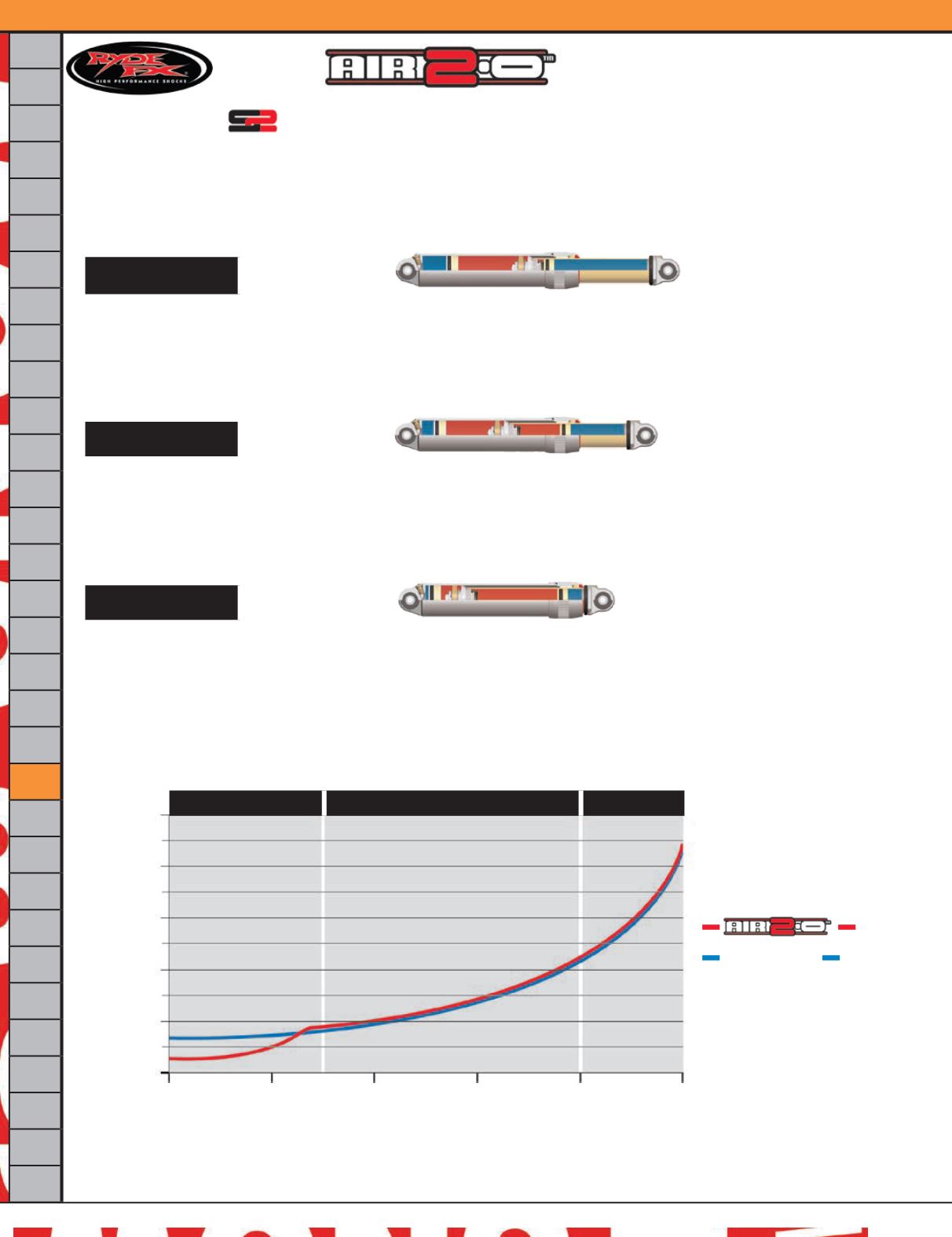

x
X X
X
X
1112
HELMETS
HELMET
ACCESSORIES
EYEWEAR
APPAREL
PROTECTIVE
SURVIVAL /
BAGS
VIDEOS
SNOWMOBILE
ACCESSORIES
SNOWBIKE
SLEDS /
TRAILERS
ELECTRICAL
EXHAUST
ENGINE
STEERING /
CONTROLS
AIR /FUEL
WINDSHIELDS
BODY
TUNNEL /RAIL
ACCESSORIES
TRACKS /STUDS /
SPROCKETS
REAR
SUSPENSION
SHOCKS
FRONT
SUSPENSION
SKIS /RUNNERS
BRAKES
CHAIN /
SPROCKETS
BELTS
CLUTCHING
CHEMICALS
TOOLS /
FASTENERS
PROMOTIONAL
REFERENCE
INDEX
Integrated Dual Rate Technology
The gas spring chamber located within the larger 47mm aluminum cylinder can be set in a
range of approximately 50-100 psi to allow for an initial lower “spring” rate. This first stage of
“spring” rate manages pressures within 1.0” to 1.5” of shock stroke for “plush” ride handling
characteristics along with adjustments to suspension sag.
As suspension travel and shock stroke increase, the gas pressure within the 47mm aluminum
cylinder increase to a level equal to the gas pressure in the 37mm chrome rod cylinder. At this
point the 37mm IFP begins to move which provides a second gas “spring” rate. Gas spring
pressures within the chrome rod cylinder can be set in a range of approximately 120-220 psi to
allow for a stiffer “spring” rate that manages ride quality within the 1.5” to 4.0” of shock stroke.
During the last 1.0” of shock stroke, gas pressures within the 37mm chrome rod cylinder
significantly ramp up and act as an anti-bottoming mechanism. The peak in gas pressure acts
very similar in purpose to a mechanical compression bumper that reduces harsh feedback to
the rider.
0
1
2
3
4
5
Stroke (inches)
Spring Rate (lbs.)
2000.0
1600.0
1200.0
800.0
400.0
0.0
Stage 1
Stage 2
Stage 3
▲
▲
▲
Stage 1
HOW IT WORKS!
■
Oil
■
Nitrogen
Stage 2
■
Oil
■
Nitrogen
Stage 3
■
Oil
■
Nitrogen
—
—
—
Competitor
—
SHOCKS


















